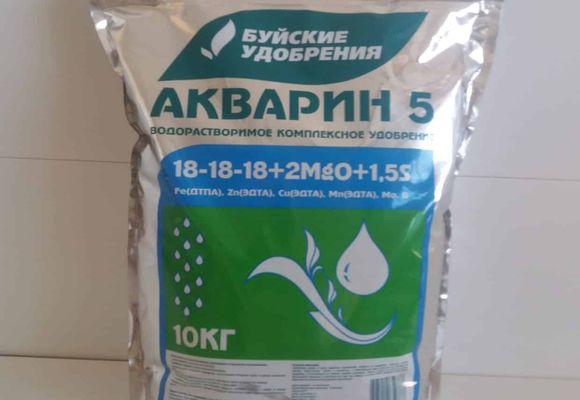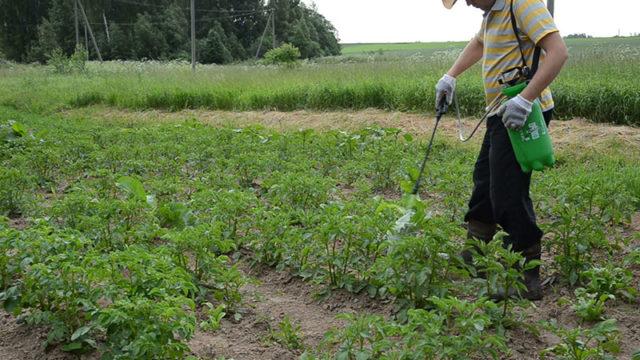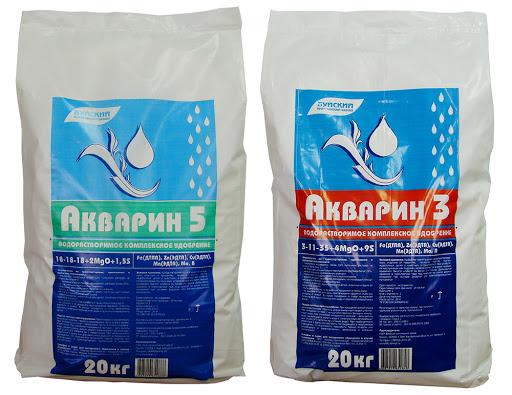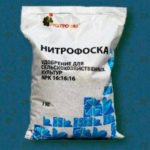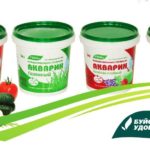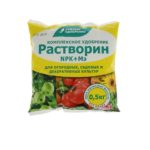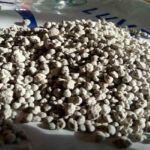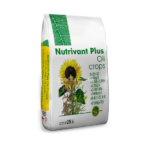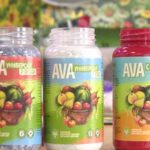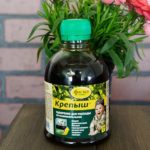In modern crop production, emphasis is placed on the rational use of mineral additives and progressive methods of their application. Thanks to Aquarin 5, plants receive additional mineral nutrition, their resistance to pests, diseases, and unfavorable climatic conditions increases, and the effectiveness of traditional mineral supplements increases. The drug is used in the cultivation of garden, ornamental and vegetable crops.
Composition and form of fertilizer release
Mineral fertilizer is produced in the form of a water-soluble crystalline powder containing chelate substances (intended for quickly introducing microelements into plant nutrition). Aquarina 5 does not contain chlorine or other harmful compounds.
Composition of the drug:
- total nitrogen;
- zinc;
- phosphorus;
- iron;
- potassium;
- magnesium;
- sulfur;
- manganese;
- boron;
- molybdenum;
- copper.
The product is sold in bags weighing 10 kg and 20 kg.
What is it used for?
“Aquarin 5” is a fertilizer that is an additional way to feed plant crops. Two types of fertilizer are used: root - during irrigation, and foliar - by spraying the above-ground part. A special feature of Aquarina 5 is the ability to fully “work” on any type of soil and in irrigation systems.
The drug increases plant resistance to pests and diseases, unfavorable climatic anomalies. The fertilizer can be used on the following crops:
- grains, legumes;
- vegetable;
- fruit;
- berry
The drug is also in demand when planting or growing lawns, ornamental trees and shrubs, industrial and coniferous crops, and ornamental flowers.
Instructions for use and dosage
Since the product can be used to treat a variety of plants, it is important to consider the manufacturer’s recommendations when using it.
| Name of culture | Composition of working solution kg/l water | Features of application |
| Berry | 1-2/200 | spraying during flowering, again after harvesting |
| 1,5-2,5/1000 | root feeding during watering | |
| Vegetables | 1-2/1000 | foliar feeding in the phase of 2-3 true leaves (again during the flowering period) |
| 2-2,5/1000 | root feeding during watering (same timing as for spraying) | |
| Fruit | 3-5/1000 | spraying during the flowering period, again after one and a half to two weeks |
| 1-3/1000 | Root feeding is combined with watering before the flowering phase, re-applied after 10-14 days | |
| Floral and decorative | 1-2,5/1000 | plantings are pollinated 3-4 times a season (in September - the last time) |
| 0,7-1,5/1000 | supplement watering 3-4 times per season | |
| Decorative shrubs, trees | 1,5-3/1000 | root feeding is applied about 6 times per season |
Safety measure when working with Aquarin 5
When using the drug, follow the standard rules for working with mineral fertilizers:
- when processing plants, wear personal protective equipment (gloves, protective mask);
- do not eat, drink or smoke during spraying;
- After work, you need to wash your hands with soap and wash under running water.
Do not allow the product to come into contact with the eyes, otherwise you should immediately rinse the mucous membranes under running water. The optimal solution is to spray in calm weather.
Fertilizer compatibility
Manufacturers recommend conducting a compatibility test before simultaneous use of plant protection products and Aquarin 5. It is important to control the formation of insoluble precipitate.
In order not to harm the plants, do not mix the drug with mineral fertilizers containing a wide range of metals (copper, aluminum and others).
Storage rules and periods
The crystalline powder does not have a limited shelf life. However, it must be taken into account that this is a water-soluble substance, so a dry, ventilated room is allocated for storage.
What can be replaced?
Worthy substitutes for Aquarin 5 would be the mineral fertilizers Aquamix and Helatem. The preparations also belong to complex water-soluble products containing microelements in chelated form.
When choosing fertilizers, preference is always given to water-soluble, ballast-free preparations containing a chelate complex of microelements. “Aquarin 5” meets all the expectations of gardeners - it improves the quality of grains, fruits and vegetables, contains a high concentration of elements, and is not difficult to use.

